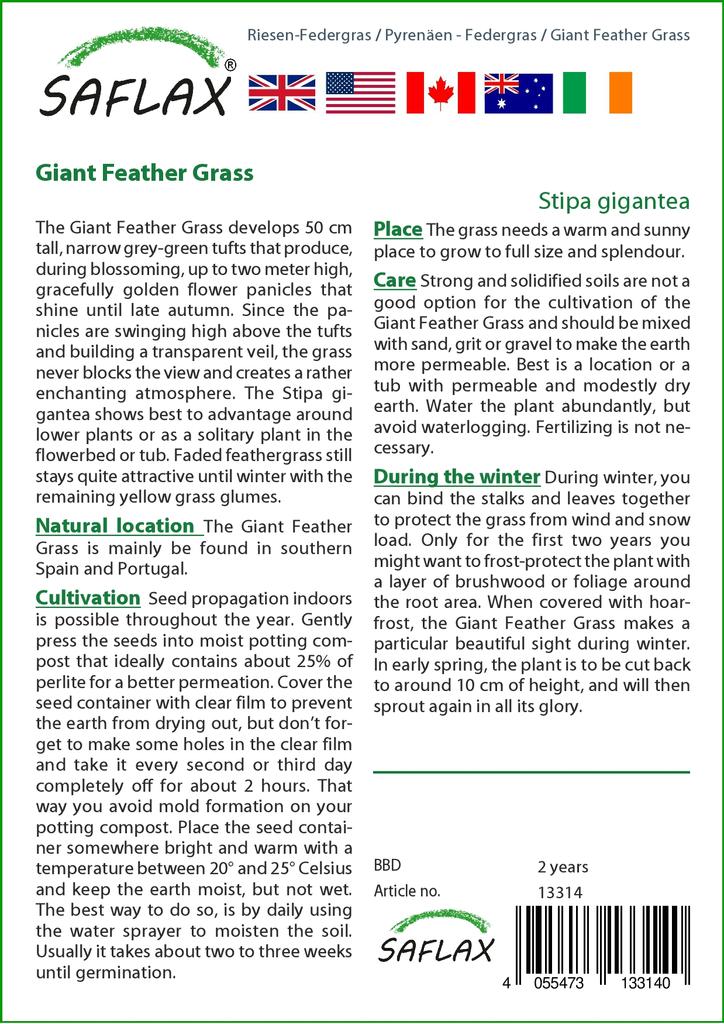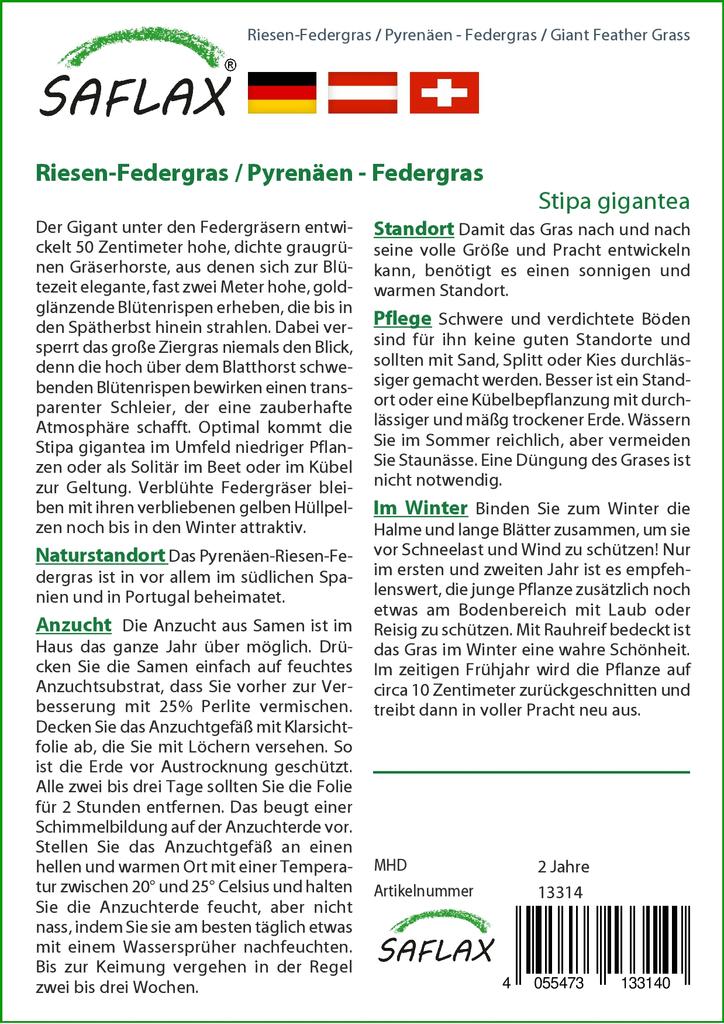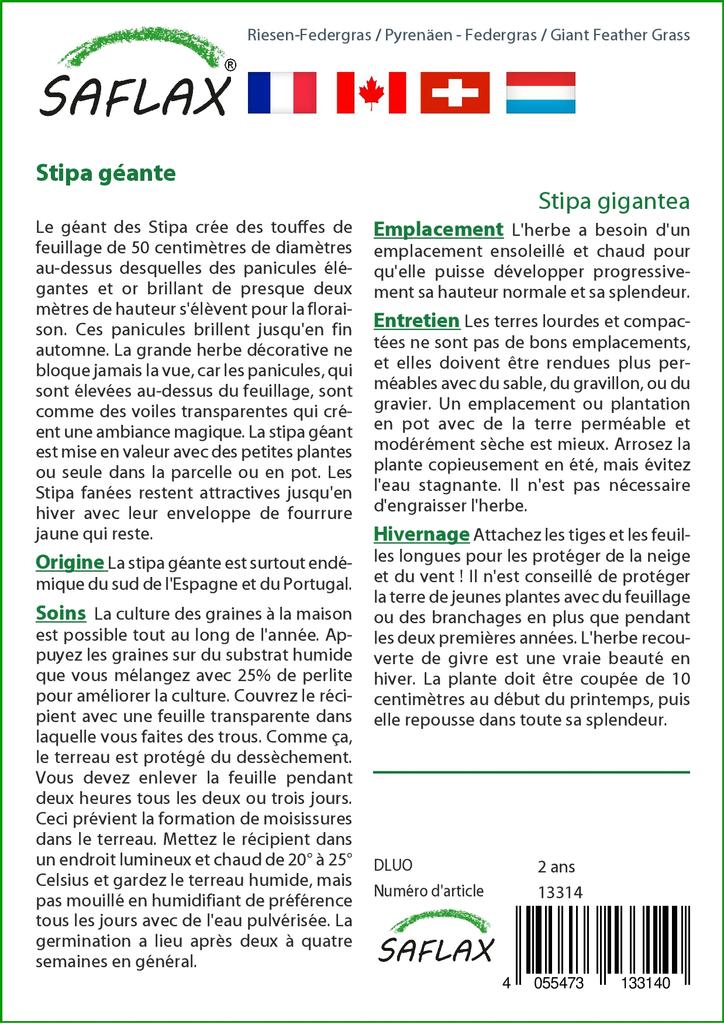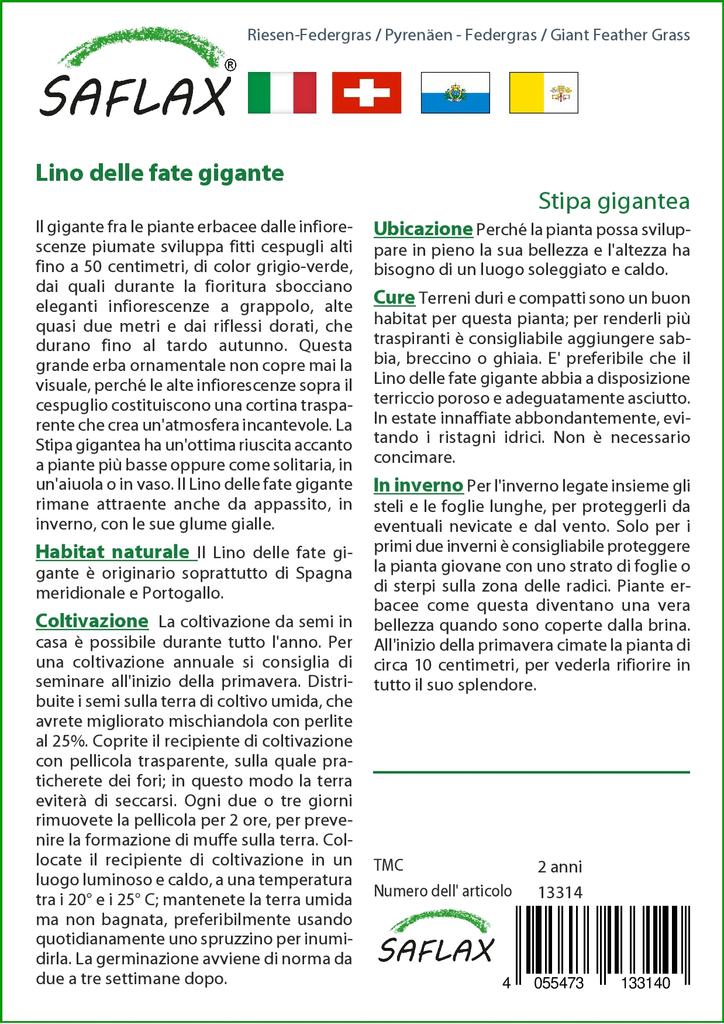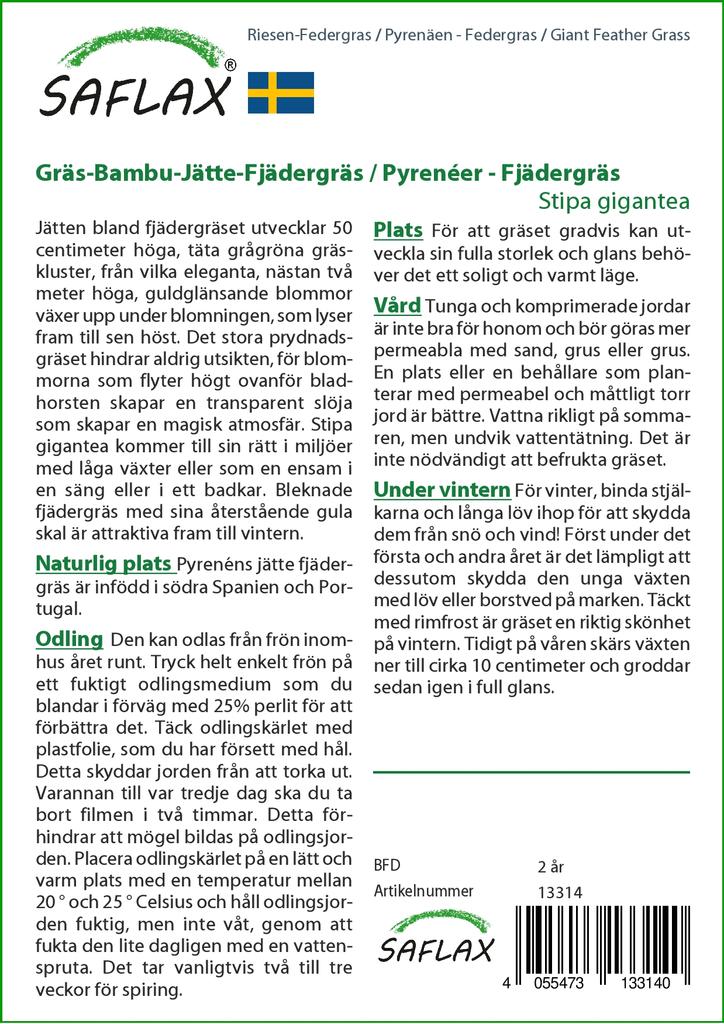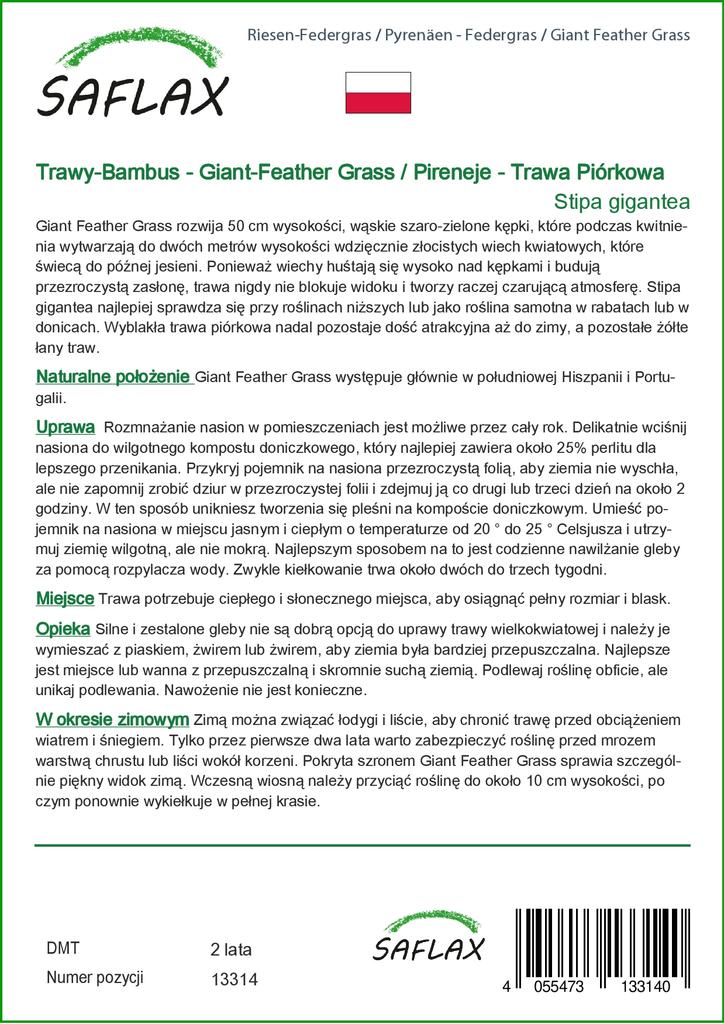Worth knowing:
The Giant Feather Grass develops 50 cm tall, narrow grey-green tufts that produce, during blossoming, up to two meter high, gracefully golden flower panicles that shine until late autumn. Since the panicles are swinging high above the tufts and building a transparent veil, the grass never blocks the view and creates a rather enchanting atmosphere. The Stipa gigantea shows best to advantage around lower plants or as a solitary plant in the flowerbed or tub. Faded feathergrass still stays quite attractive until winter with the remaining yellow grass glumes.
Natural Location:
The Giant Feather Grass is mainly be found in southern Spain and Portugal.
Cultivation:
Seed propagation indoors is possible throughout the year. Gently press the seeds into moist potting compost that ideally contains about 25% of perlite for a better permeation. Cover the seed container with clear film to prevent the earth from drying out, but don’t forget to make some holes in the clear film and take it every second or third day completely off for about 2 hours. That way you avoid mold formation on your potting compost. Place the seed container somewhere bright and warm with a temperature between 20° and 25° Celsius and keep the earth moist, but not wet. The best way to do so, is by daily using the water sprayer to moisten the soil. Usually it takes about two to three weeks until germination.
Place:
The grass needs a warm and sunny place to grow to full size and splendour.
Care:
Strong and solidified soils are not a good option for the cultivation of the Giant Feather Grass and should be mixed with sand, grit or gravel to make the earth more permeable. Best is a location or a tub with permeable and modestly dry earth. Water the plant abundantly, but avoid waterlogging. Fertilizing is not necessary.
During the winter:
During winter, you can bind the stalks and leaves together to protect the grass from wind and snow load. Only for the first two years you might want to frost-protect the plant with a layer of brushwood or foliage around the root area. When covered with hoarfrost, the Giant Feather Grass makes a particular beautiful sight during winter. In early spring, the plant is to be cut back to around 10 cm of height, and will then sprout again in all its glory.
Picture credits:
- © © 1. Saflax 2. A. Barra - CC-BY-3.0 - http://creativecommons.org/licenses/by/3.0/
- © Frank Laue - © Saflax - http://www.saflax.de/copyright
- © Frank Laue - © Saflax - http://www.saflax.de/copyright
- © © Saflax
- © A. Barra - CC-BY-3.0 - http://creativecommons.org/licenses/by/3.0/ - . -
- © - -
- © - -
- © - -
- © - -
- © - -










